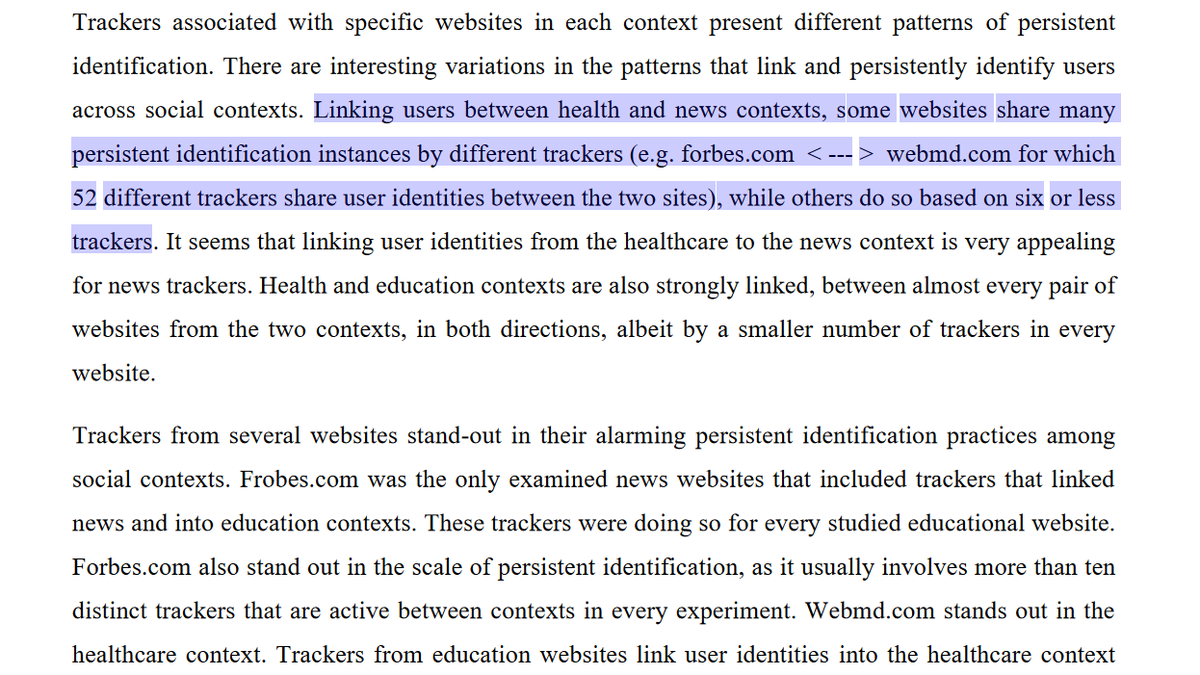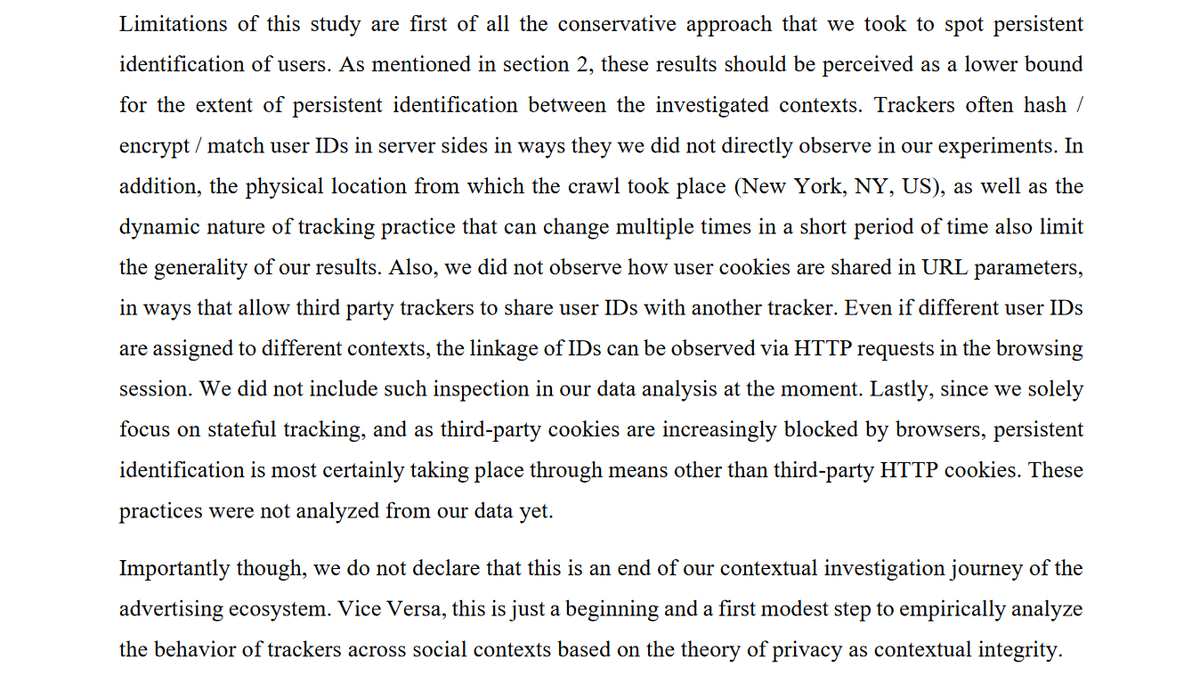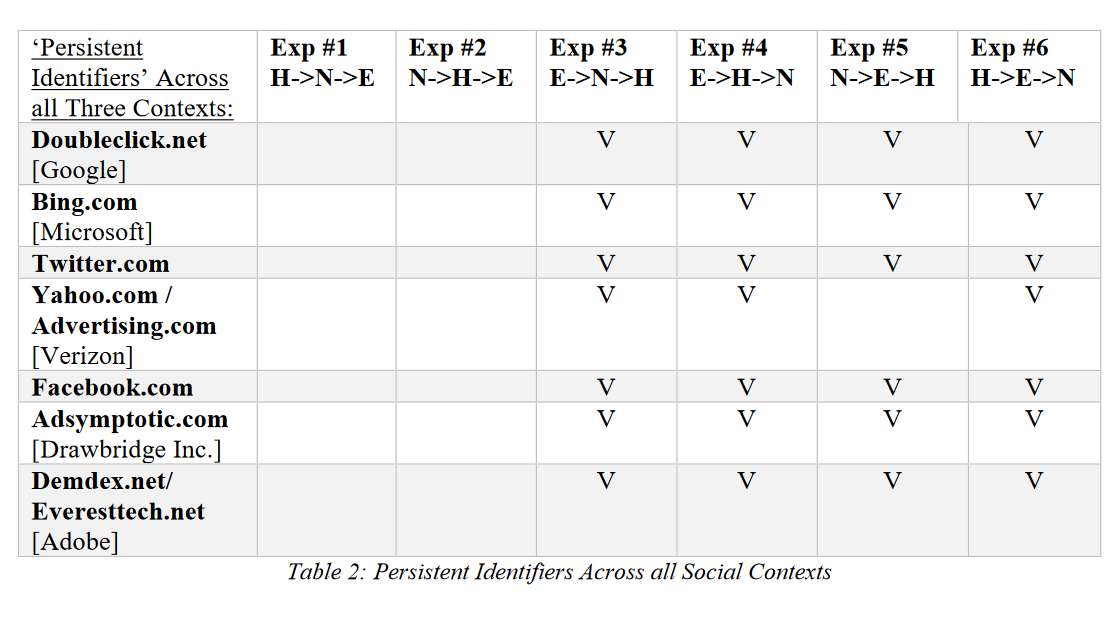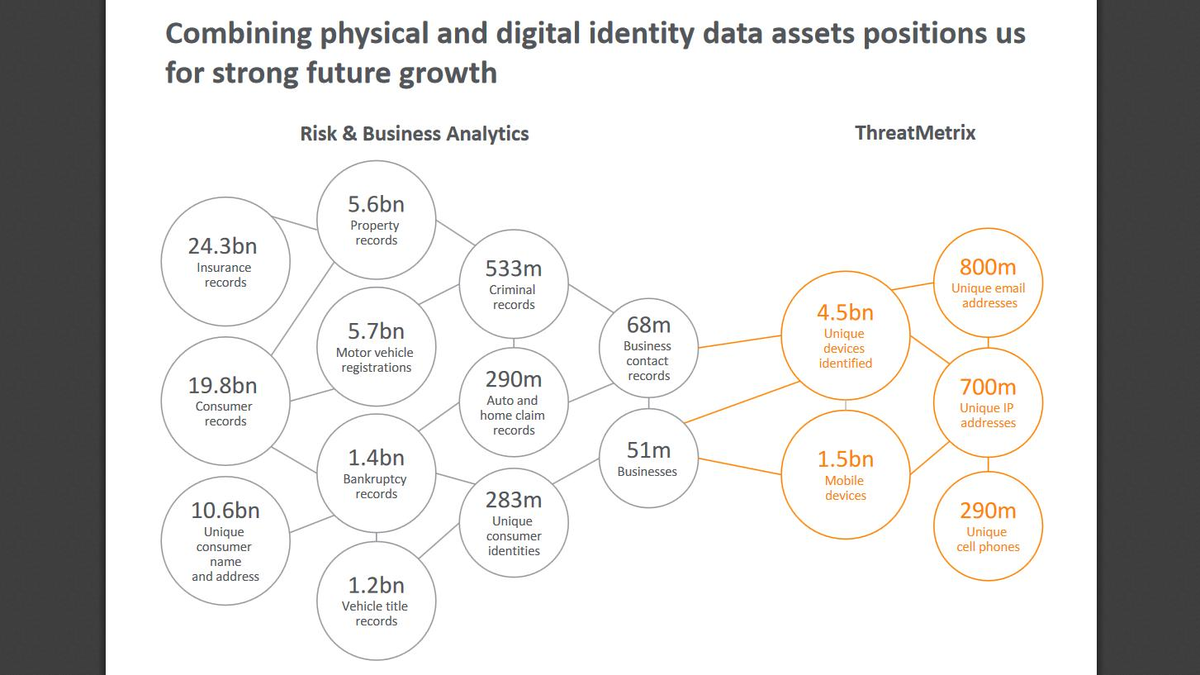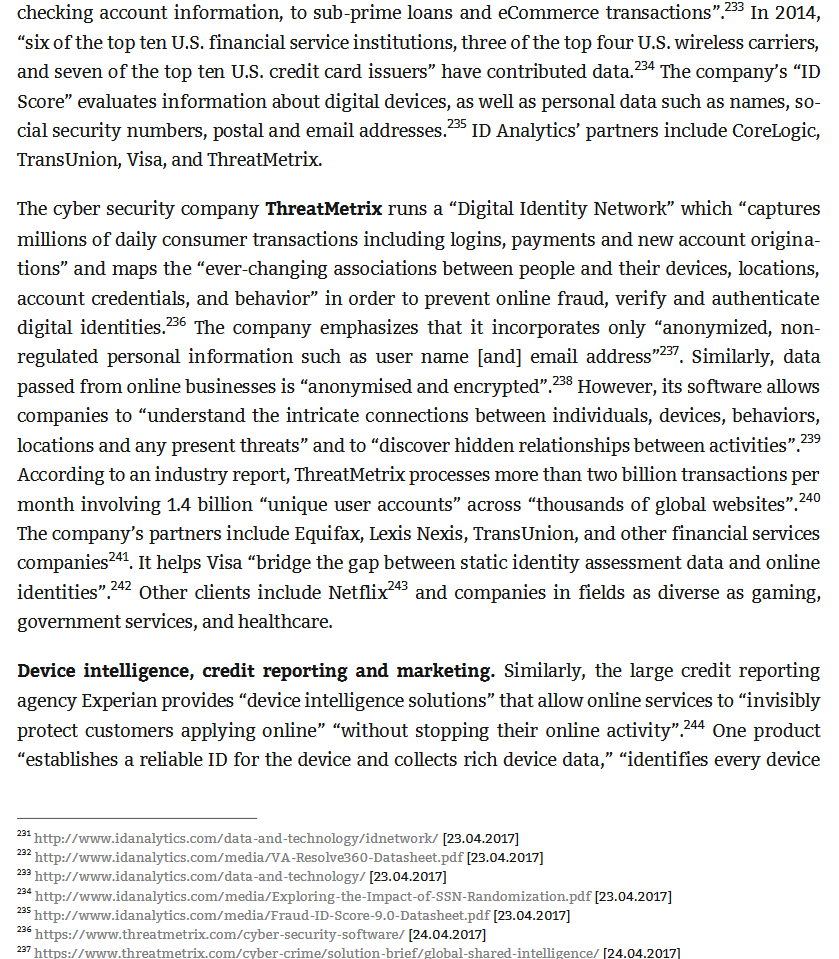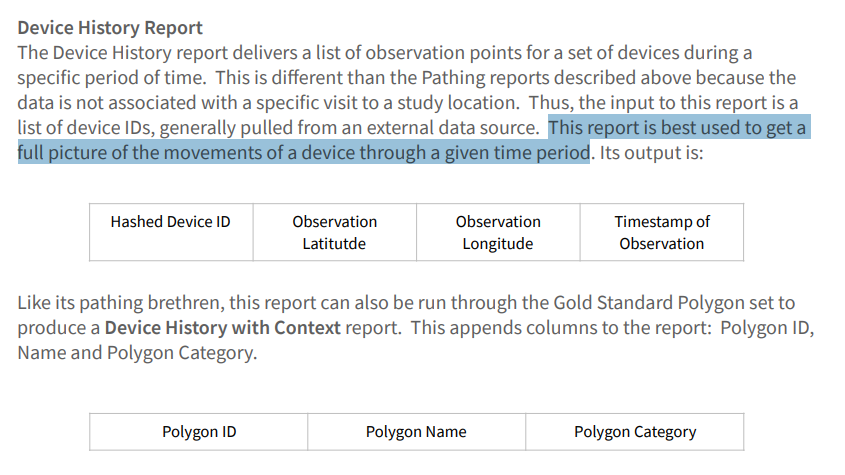Excellent study by @idonibrasco, @HNissenbaum et al: news.cornell.edu/stories/2020/0…
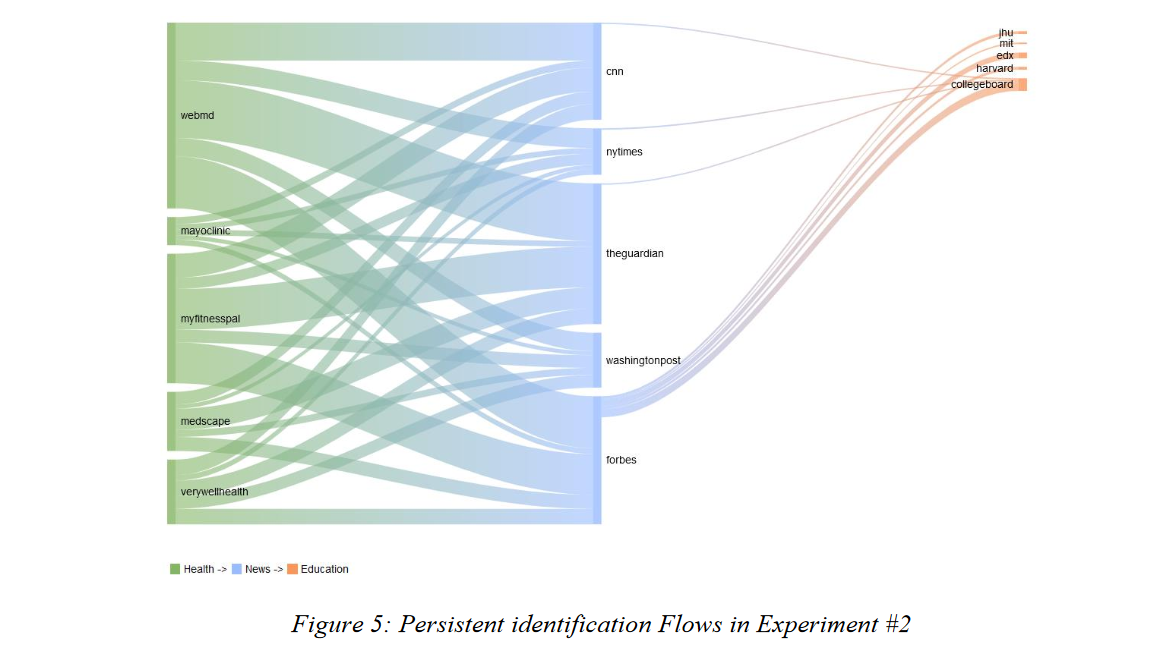
I think, examining cross-context ID in this way, presented at the @FTC's #PrivacyCon today, is very useful.
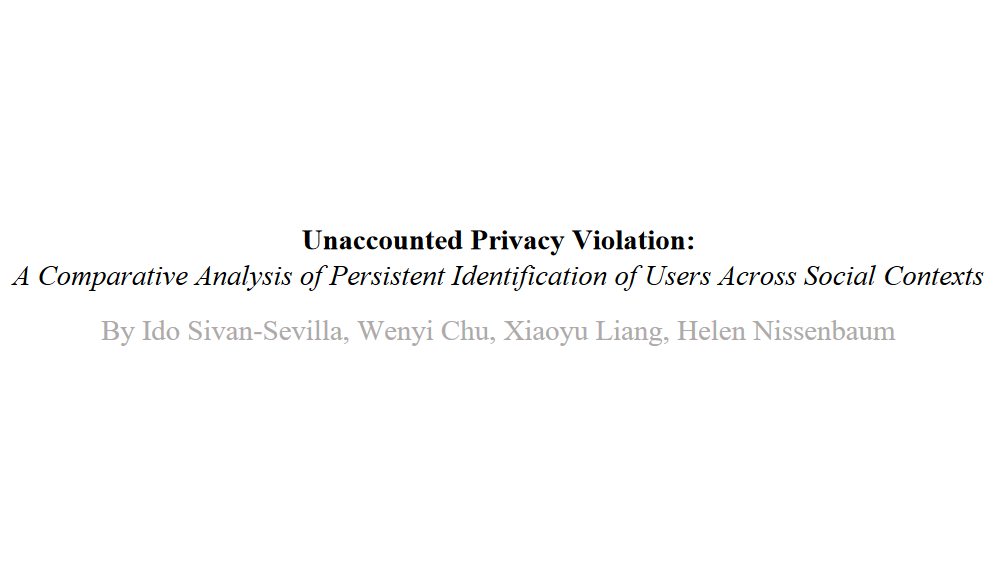
EU data protection authorities must adopt this methodology to gather evidence.
Of course, it's also interesting that the order in which users visit sites in health, education and news contexts makes a difference.
EU authorities are currently focusing on cookie storage, and in the best case, on third party requests. Apart from raids, they could examine systematic ID matching (plus available info on third parties).
I observed lower numbers when examining websites from the EU. But even a few ID syncs are too many.
Anyway, looking forward to further studies on persistent identifiers, from web to mobile to IoT.
- Level 1: examine personal data transfer between user, website, third parties
- Level 2: examine across sites
- Level 3: examine across web, mobile, IoT
- Level 4: include info on how third parties *use* data
In the EU or not, you can limit web tracking to some extent. But this goes far beyond the web, it's systemic and individual 'choice' won't fix it.

